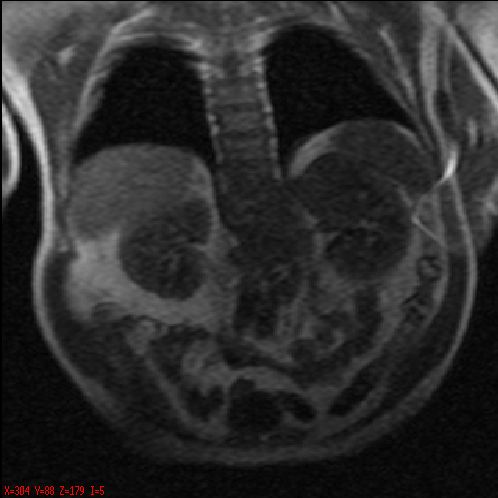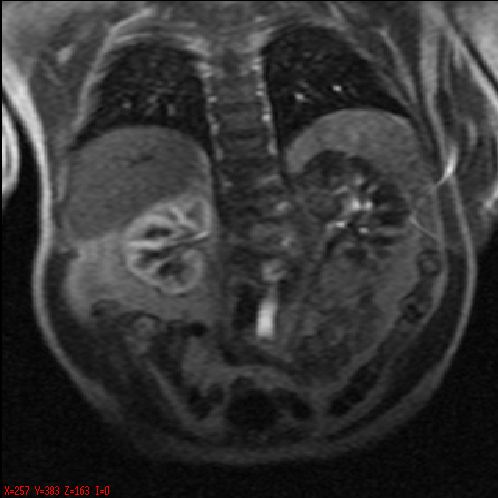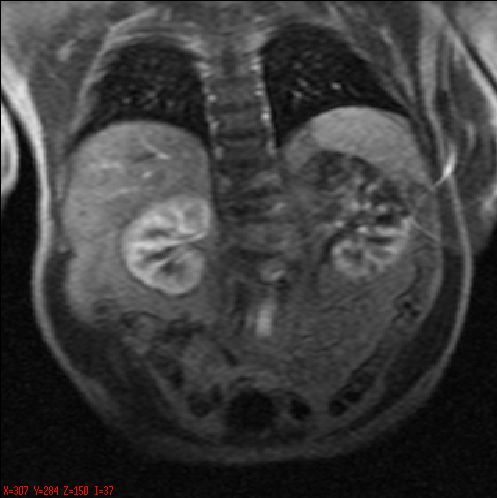Deformable Registration for Contrast Agent Tracking Procedures
This project deals with diagnostic procedures involving contrast agent. The tracking of the contrast agent in the patient during the scans gives valuable functional information and is known as Bolus Tracking.
In order to be able to perform the tracking of the contrast agent and compare the different scans, several steps have to be done. The most important is to undo the motion between the subsequent scans, so that only the motion of the contrast agent can be analyzed. The procedure of 'undoing the motion' is called Deformable Registration.



|
|
Short Example
The data sets are in our case series of fast 2D MR scans. Using a special protocol, 4 2D slices (1 x transversal, 3 x coronal) are acquired in one second which allows scanning with an extremely good temporal resolution. The scanning is performed for approx. 3 minutes, which results in ca. 300 frames of each of the slices.
The patient is administered a contrast agent intra-venously. The spreading of the contrast agent is then tracked in the region of interest of the body. This can give valuable information about the blood flow and thus the condition of the patient. For example, if the patient has a stenosis in the region of interest, the contrast agent will not reach certain parts of the organs in question. This is visible in the scans and a diagnosis can be made.
The three MR images on the left-hand side show example scans during the procedure for kidneys.
- The first image displays the patient before the contrast agent has reached the area of interest. The kidneys are dark in this image.
- In the second image, the contrast agent is entering the kidneys. The areas which contain the contrast agent are brighter in this image.
- The last image shows a phase of the scan where the contrast agent is spread in all areas of the kidney which are reached by the blood flow. Please note that the upper part of the right-hand kidney is dark. The conclusion can be made that no contrast agent is present in this area and eventually a stenosis can be identified.
Task
Implementation of the motion correction (deformable registration) for the available MR datasets in Matlab or C++. We have a running 2D Matlab and a 3D C++ prototype for deformable registration. They (or one of them) have to be extended/modified in order to deal with the MR sequences in presence of the contrast agent.
|